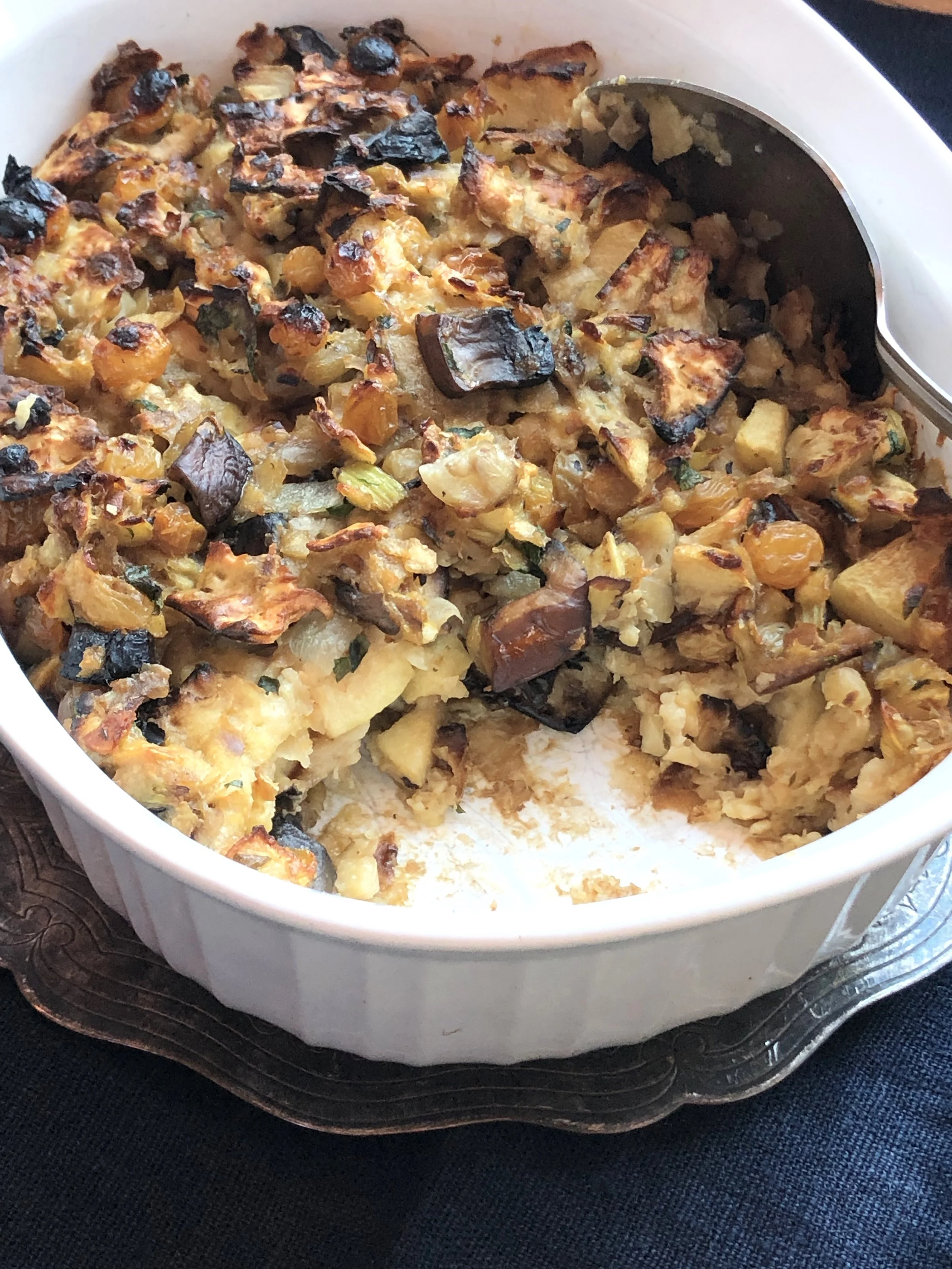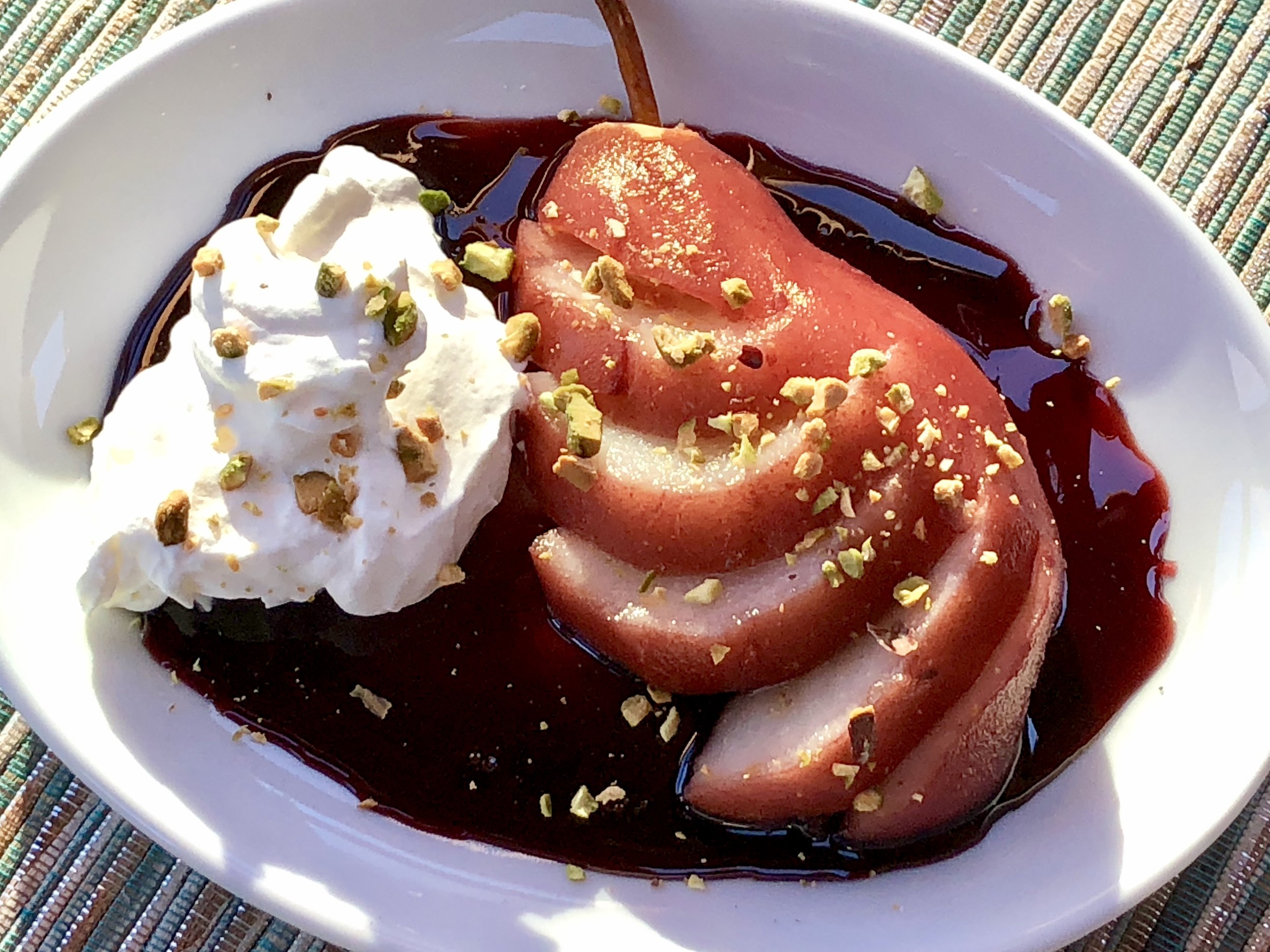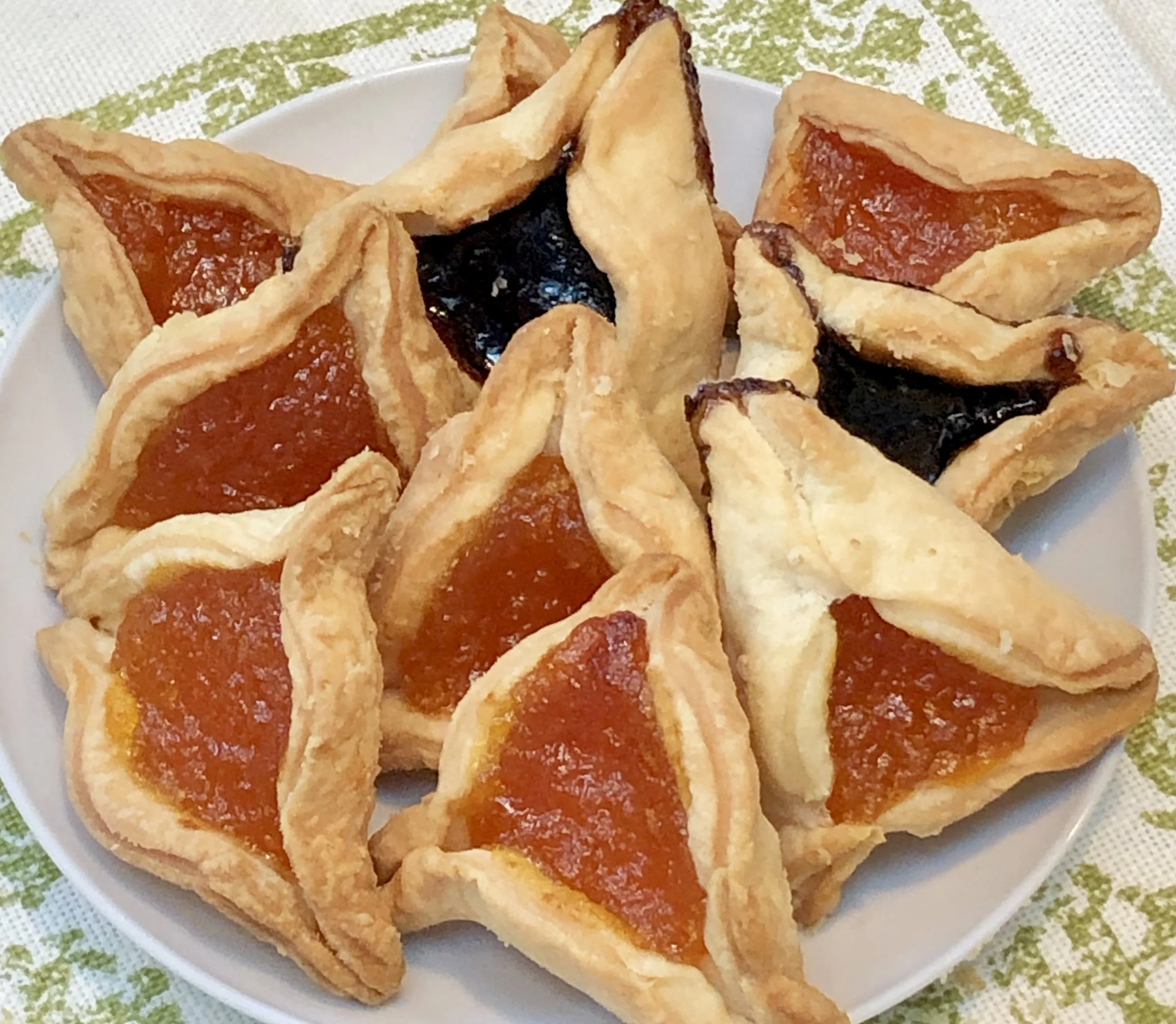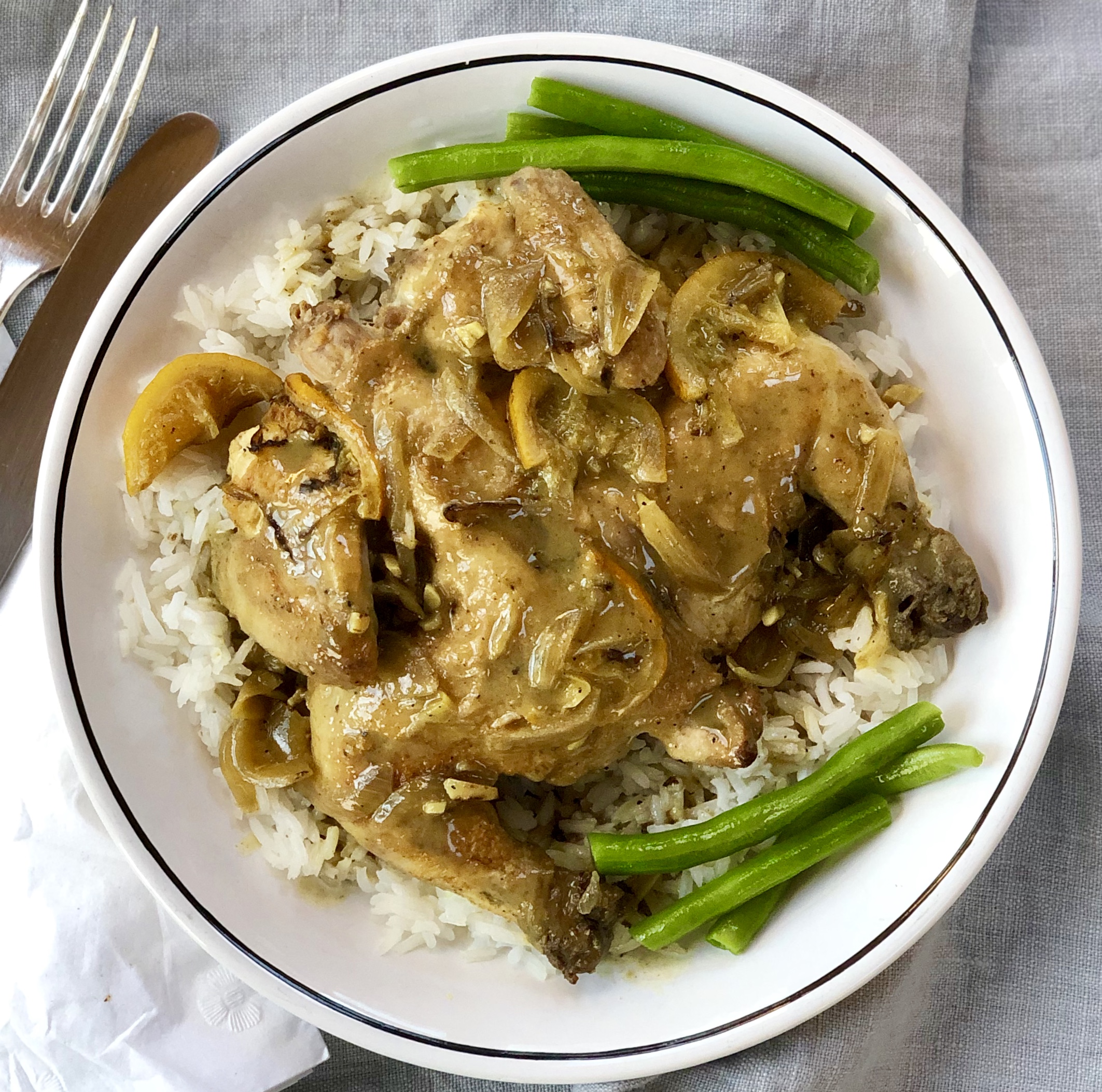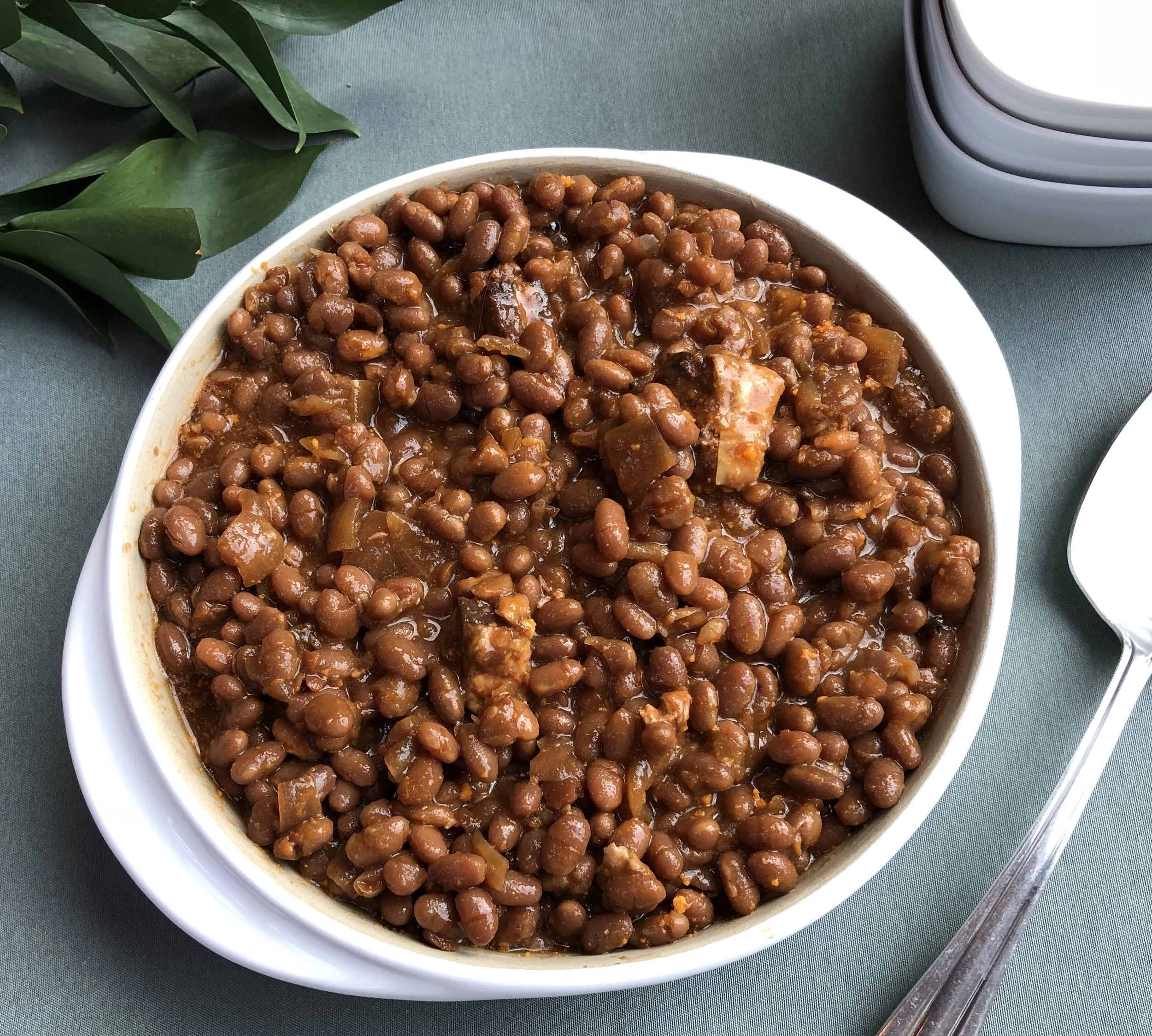Matzo Stuffing with Apples and Portobello Mushrooms
Almost everyone I know makes brisket for the first Seder.
But my grandma, and then my mother — for all the years that I remember — served turkey. So, so do I.
I may also make a brisket, depending on how many people are coming to celebrate with us. Or, I may make brisket for the second night. Depends.
But there’s always a turkey. And that means stuffing.
And so, the chosen stuffing for this year: crushed matzo with apples and portobello mushrooms. It’s easy and can be prepared in advance; just pop it in the oven to cook about 40 minutes before serving time. Sometimes I add thyme to this dish, sometimes I don’t, depending on the crowd. It’s delicious either way, although of course, the fresh herb gives it a bit more flavor.
Matzo Stuffing with Apples and Portobello Mushrooms
6 pieces of matzo, broken up into little pieces
1-1/2 cups chicken or turkey stock (or vegetable stock)
3 tablespoons vegetable oil
1 large onion, chopped
1 large stalk celery, chopped
2 large Portobello mushroom caps, chopped
2 tart apples, peeled and chopped
1/2 cup golden raisins
3 tablespoons chopped fresh parsley
2 teaspoons fresh thyme leaves, optional
salt and freshly ground black pepper to taste
2 large eggs, beaten
Preheat the oven to 375 degrees. Place the matzot in a bowl and pour the stock over them. Let soak for 5-6 minutes or until liquid has been absorbed. Set aside. While the matzot are soaking, heat the vegetable oil in a saute pan over medium heat. Add the onion and celery and cook for 1-2 minutes. Add the mushrooms and cook for 3-4 minutes. Add the apples, raisins, parsley and thyme, if used, and cook for another minute. Spoon the contents of the pan into the bowl with the matzot. Sprinkle with salt and pepper. Toss ingredients to distribute them evenly. Add the eggs, mix the ingredients thoroughly. Spoon the ingredients into a baking dish. Bake for about 40 minutes or until the top is crispy.
Makes 6-8 servings
